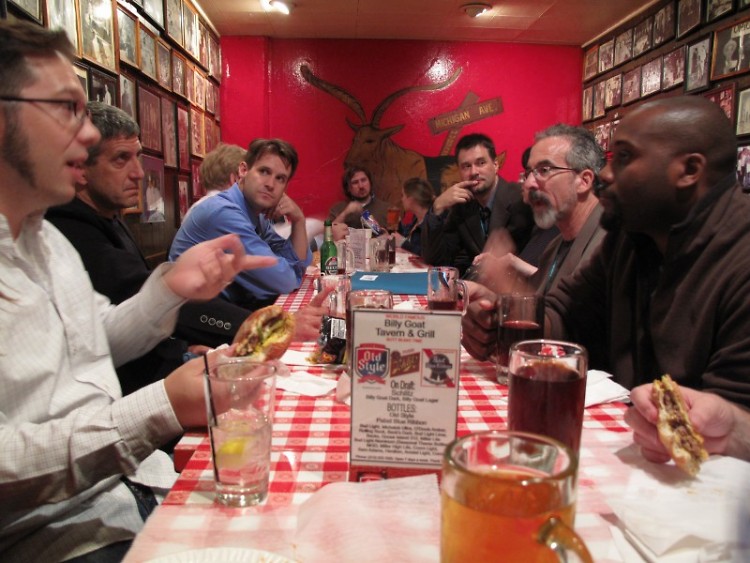From Rapidian staff: Last Thursday, I pinwheeled through the freeways separating our city from that tall bold slugger known as Chicago. It was the first Block by Block summit (BxB), a conference organized by Michele McClellan of the Reynolds Journalism Institute Fellows Program. Michele had gathered about 100 participants, mostly locally focused, digital journalism projects similar to The Rapidian.
The various media outfits took it as a chance to feel out the terrain and establish some sort of standard to measure ourselves against. There were several community foundations, universities and tech organizations interested in supporting the swell of hyperlocal coverage, and projects in attendance fell into three broad categories with hybrids in between:
- Content producers - Projects that are [volunteer] staffed by those who create content. Usually, they are former journalists who either saw a gap in coverage or wanted to cover issues without editorial restrictions. Some of these projects were local bloggers who organized into one main platform (Chattarati of Chattanooga, Tenn., Gapers Block of Chicago, Ill.) and evolved from that stage. This is where many of the one-person outfits fall, and they are often both the engine and steering wheel for the project.
- Community managers - These are projects, like The Rapidian, whose staff focus mainly on managing a community in addition to contributing content. Some are collectives (Oakland Local in California, Twin Cities Daily Planet in Minnesota) while others are backed by nonprofits and universities as one of many projects, not the only project (The Rapidian is part of the CMC's consortium of WYCE, GRTV, Wealthy Theatre and a couple other media; besides editorials, content from staff is produced during our own time).
- Replicable projects focused on crowdsourcing from a local level or specific community - Two prominent attendees were Spot.Us, which asks interested audience to fund journalism projects, from specific stories to organizations; and SeeClickFix, which maps out citizens' submissions of neighborhood problems (i.e.: potholes) for city governments to address.
As the first digital journalism conference convening such a diverse crowd, it was fascinating to see how our various understandings lined up. Each definition had many striations.
- Hyperlocal - At The Rapidian, simply put, we define hyperlocal as within the city boundaries. For others, that was too broad and they zeroed in on a neighborhood. Some neighborhoods were as big as small towns. Others focused on the metro area, which was undercovered by their local media.
- User-generated content - There were many publications that relied on volunteers to generate content. We all used different terms, from "volunteer staff" to "contributors" to "reporters." While all of these fall under the umbrella of user-generated content, it does not necessarily mean that it's a come-one-come-all citizen journalism platform. Some focused active recruitment on former journalists or polished writers. Others assigned journalists to make sure under-represented voices had a place on their platform.
- Community information - The moot definition of journalism did buck slightly. The term "journalism" tends to be a stumbling block when trying to get at a bigger conversation, and questions of ethical standards and conflicts of interest come up. "Community information" seems to be a more encompassing term.
It was fascinating to see how The Rapidian fit into this landscape. So many projects are a response to community needs that we sometimes forget that each place is different. Grand Rapids is community-oriented and abounds in philanthropy and willing volunteers, not something every big city can brag about. If I wanted to explain a certain initiative, I had to first make clear where we were coming from.
This first BxB was a good starting point for community information providers to see and paint out the digital media spectrum. I'm certain that by the second BxB, we'll all be ready to take it several steps further.
The Rapidian, a program of the 501(c)3 nonprofit Community Media Center, relies on the community’s support to help cover the cost of training reporters and publishing content.
We need your help.
If each of our readers and content creators who values this community platform help support its creation and maintenance, The Rapidian can continue to educate and facilitate a conversation around issues for years to come.
Please support The Rapidian and make a contribution today.

